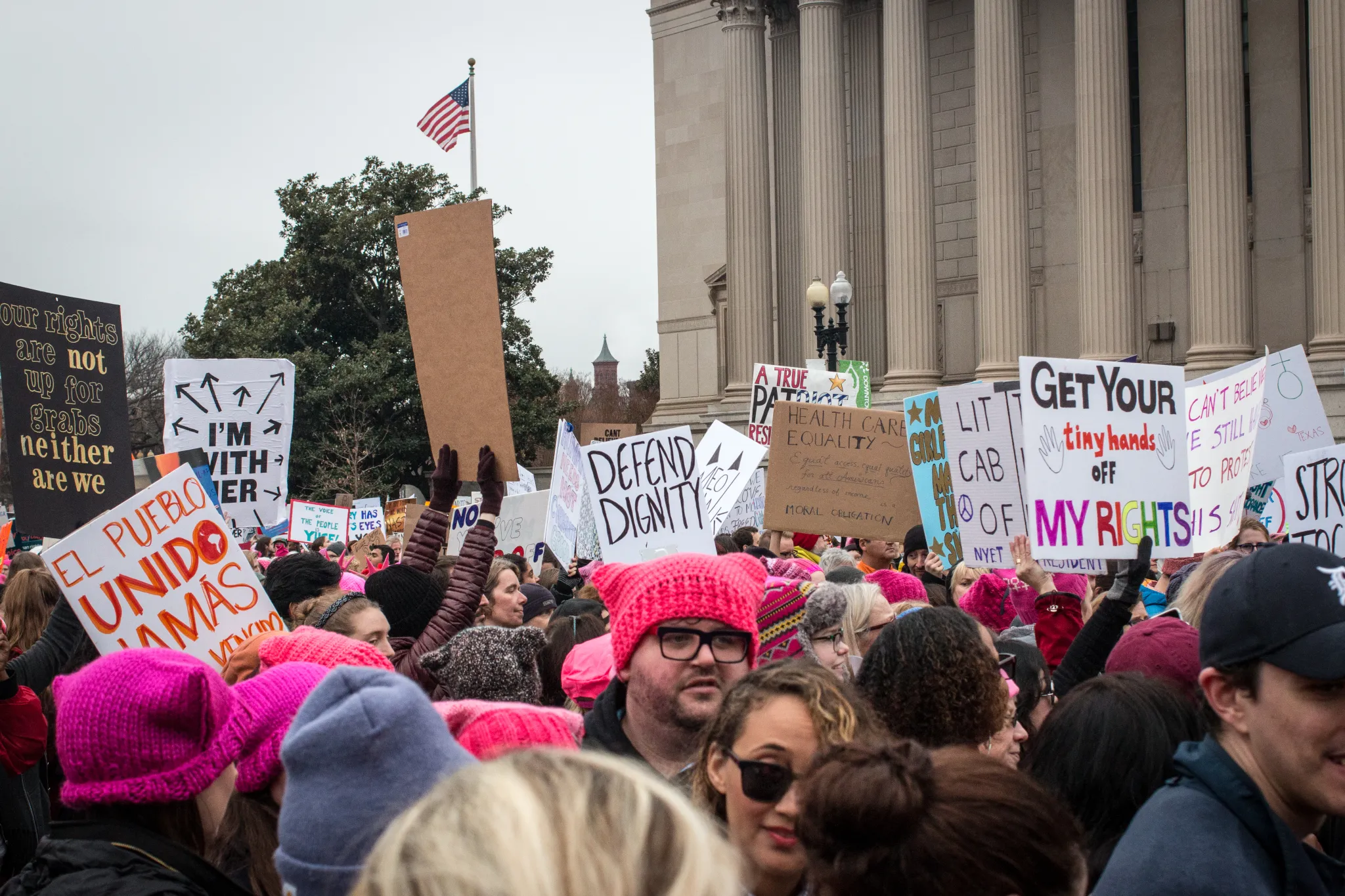Social movements are here to stay – a part of our democratic way of life

Disclaimer: Views expressed in this commentary are those of the staff member. This commentary is independent of specific national or political interests. Views expressed do not necessarily represent the institutional position of International IDEA, its Board of Advisers or its Council of Member States.
US President Donald J. Trump’s inauguration on Friday marked an outstanding shift in democratic politics around the world (as my colleague Adina Trunk wrote in her piece on ‘The Dismantling of Democracy’). But Saturday was also noteworthy. More than 500,000 people attended the ‘Women’s March’ in Washington, DC in an effort to create a political counterweight to the election’s rhetoric around diversity, civil liberties and marginalized groups. The march was part of a discussion about the role that social movements will have in the way we do politics in the coming years. Barack Obama’s compelling farewell speech is the most recent wakeup call: ‘if something needs fixing, then lace up your shoes and do some organizing’.
Social movements are often issue-based collections of individuals. Sometimes they take their voices to the streets espousing particular political ideals and, at times, influencing policy from the outside, without being democratically elected. Thus, social movements can put in check democratically elected political leaders with populist and demagogical tendencies that may, in the long run, not provide realistic and sustainable policy alternatives.
Social movements and new communication technologies
Social movements are shaping modern democratic political life. The ‘Occupy Wall Street’ and related ‘Occupy’ movements are good examples. Propelled by a blog post in the aftermath of the 2008 financial crisis, the movements soon became a media sensation and later disseminated to other regional hubs. In the United States, many of the original protesters eventually supported Bernie Sanders’s 2016 surprisingly successful presidential bid.
The demand for alternative political spaces has crystalized in an ‘almost three-fold increase in citizen movements at the global level’, according to the book Political Parties and Citizen Movement in Asia and Europe. Various factors have contributed to the allure of these movements. On the one hand, membership in political parties has decreased and public dissatisfaction over political parties’ performance has increased. On the other hand, social movements have been particularly savvy to maximize the potential of new communication technologies to directly engage with their followers and put pressure on politicians.
These new engines for direct democracy have been fuelled by a myriad of new communication technologies available today. Currently, about 40 per cent of the population has access to the internet, a major increase since 1995 when less than 1 per cent did. Mobile phones also are broadly used: the number of consumers is expected to hit 4.77 billion in 2017. Likewise, with the proliferation of social media platforms, people have more ways to reach government representatives who use social media. Facebook has more than 1 billion daily users, while Twitter had 320 million users as of March 2016, and Instagram had 600 million monthly active users as of December 2016. At the same time, traditional telecommunications have morphed. Some people refer to a ‘podcast explosion’, for example, reflecting on the way radio has transformed to become a web-based medium. TV also has been forced to adapt to this new tech-driven era. Most shows, for instance, offer short streamed clips on YouTube in the hopes of gaining traction with the viewers.
This technological landscape has allowed political innovations such as ‘hashtag activism’, i.e. the use of Twitter hashtags for virtual advocacy to flourish. One of the most successful examples has been the #BlackLivesMatter movement. Born in the United States in 2012, the group rebranded the black liberation movement of the 1960s around demands for greater accountability in relation to the killing of African-American men by law enforcement officers. They have provided unprecedented visibility to this cause primarily through social media awareness. Some of their most pivotal accomplishments include the resignation of the University of Missouri’s president over claims of racist practices in campus. Also, in Georgetown University students succeeded in forcing their institution to rename buildings that bore slave-owners’ names. Most significantly, the movement was directly involved in mobilizing public sentiment to remove the confederate flag that stood in front of the statehouse in South Carolina.
Can social movement replace political parties?
This rich market of new communication technologies for political activity, as well as the increased importance of social movement mean that political activism will most likely continue soaring in the coming years. The divided political arena will further catalyse these processes.
But while it may be true that social movements are challenging the role of political parties as the single most important broker between citizens and governments, it is not right to assume that movements can entirely replace parties. Being outside of the establishment often prevents the movements from translating their demands into policy change—to the disappointment of many of their followers.
Eventually some protesters may choose to filter their initiatives through established channels before losing momentum. The creation of the Aam Aadmi Party in India illustrates this. The original movement started with activist Anna Hazare’s hunger strike in 2011. Her demands for the establishment of an effective ombudsman to deal with corruption led many people to gather in what was then referred to as ‘India’s Tahir Square’. The impact of the protests was further intensified by the media coverage and social media pressure that ensued. But eventually protesters realized ‘that the ruling political class was unresponsive and would not give up power by instituting major anti-corruption reforms’, according to the World Movement for Democracy. The protesters therefore had no other choice but to become a formal party if they wanted to achieve tangible policy reforms. But for a social movement to become a political party is not a walk in the park, as it changes the nature of the group. The Aam Aadmi party, for example, faced allegations of corruption within its own ranks.
What traditional politicians can learn from social movements
If social movements are here to stay, politicians must learn how to respond to them. Traditional politicians are not totally unaware of the potential offered by new communication technologies. Justin Trudeau's successful campaign in Canada reveals smart usage of social media during the elections, as he used Facebook and Instagram to reach 40 per cent of the country’s population. And the payoff was enormous, given how cheap and easy to use these tools are. With some (somewhat) spontaneous shots from the gym and the Trudeau family’s Christmas party, the BBC was reporting on his training routine and his holiday traditions.
But Trudeau is unfortunately still the exception. Traditional politicians can do more to tap into the engaging capacity of social media to communicate with their voters. In that sense, they still have a lot to learn from activists and social movements on how to transform seemingly trivial 140-character posts and YouTube videos into trending discussions that people across the globe share millions of times. With more than 20 million Twitter followers, Trump has certainly also mastered this skill.
Most importantly, these new communication technologies have the potential to improve transparency and accountability beyond election season, even if these information flows can be unreliable. While Trump’s tweets may annoy many of us, how else would we know his stands on climate change?
Even though I was myself reluctant to join Twitter—which I originally thought was only used to share pictures of whatever I was eating and commenting on the Kardashians—I joined in 2012 (@catasur). And so far I actually found it to be a powerful tool to influence the debates that I am passionate about. In my case, I chiefly focus on political corruption and organized crime under the hashtag #ProtectingPolitics. How are you influencing the debate that matters to you?
Una versión en español de este artículo está disponible aquí




